Ideal Bedroom Temperatures

No one is arguing that sleep is bad for you. But ideal numbers, like length of sleep and time to bed, among others, are constantly scrutinized by researchers. Now you can add the temperature of your bedroom to that list. Several studies suggest that keeping your bedroom cool is beneficial for a good night’s sleep, and recent research even suggests that sleeping in a 66-degree room for a month increased stores of good fat in men. (Read more on that on Time.com.)
However, according to Nancy Rothstein, MBA, The Sleep Ambassador®, bedroom temps are not universal. “If you follow the research and you’re shivering in bed, you’re not going to sleep well,” says Rothstein. (For the record, she keeps her bedroom at 68 degrees.) Read on for her tips on finding the right temperature for your comfort level.
Assess Your Comfort Level for a Week
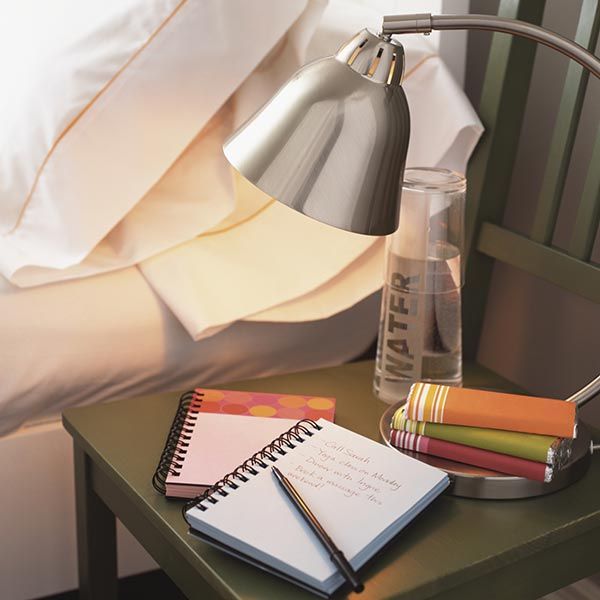
It’s tempting to adapt every sleep tip straight away, but Rothstein suggests otherwise. “Nobody can sleep for you,” says Rothstein. “So you have to figure out what works best for you. The big thing is, our brains are all over the place, but our bodies are present, honest, and tell us exactly what they need.” Put aside a week to evaluate every aspect of your sleep space and take note. She suggests keeping a notepad by your bed and writing down your bedroom conditions, like how many times you wake during the night, your covers, if you run your ceiling fan, and anything else of note. Click through for noteworthy conditions to help find your perfect sleep temperature.
Clothing and Bed Dressings
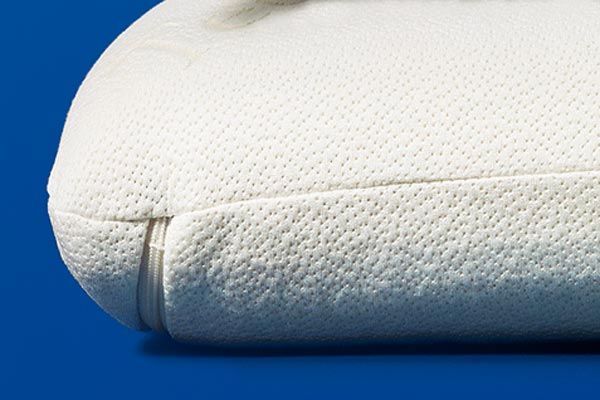
If you’re going to bed with thick blankets and throwing them off during the night, something has to change. “You sort of have an internal thermostat,” says Rothstein. “The body is going to try to reach what it’s comfortable reaching. Pay attention and listen to what your body is saying.” Consider what you’re wearing to bed, your pillows, sheets, and any blankets you’re using. Other health factors can impact your internal temperature, such as pregnancy, menopause, and illness.
If you find yourself sweating in your sleep or shedding bedding during the night, lighten up on your current bedding. Rothstein suggests the Technogel Classic Pillow, which has a top layer of waffle-like chambers filled with cooling gel (about $170; Technogel). Read about other This Old House-approved pillow picks. There are also affordable mattresses in a box available, such as the Casper, that utilize cooling features and work to absorb body heat.
Additionally, retailers like IKEA sell comforters in a wide range of warmth ratings and fillings (about $8 to $100, depending on filling quality). It may be time to sub in a lighter duvet for your toasty winter one.
Opt for bedclothes that breathe and aren’t restrictive. Cotton is an easy go-to that’s already in your closet. (Yes, your old, holey college intramural T-shirt with the built-in ventilation will work.)
Heating, Cooling, and Ventilation
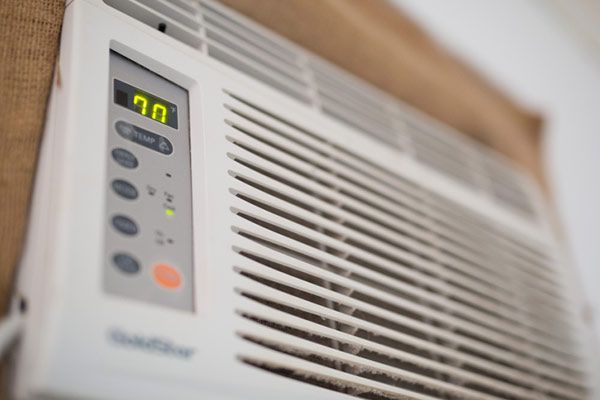
Cracking your bedroom window for a calming breeze may not be an option if you live in an urban area or near a busy road. That’s where air conditioners step in for the breezy rescue. If you find that you can’t get comfortable covered by a mere sheet in summer months, it may be time to dial down the AC and pile those covers back on your bed. Remember, to each his or her own.
Watch Richard Trethewey install a portable air conditioner.
Keep your cooling system in check with 9 things you need to know about air conditioning.
Air Quality
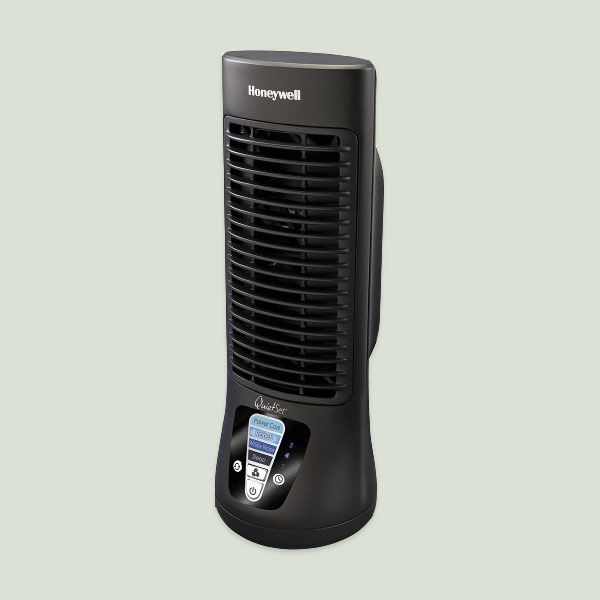
Perhaps your allergies flare up when you kick on the AC for spring’s warmer nights. Fits of coughing during the night aren’t contributing to your productivity tomorrow. Making sure that your cooling and heating systems have clean air filters is also essential for restful sleep. That goes for built-in and portable units.
A standard box fan could do the trick for cooling you off in bed, but you may need a fan with a HEPA filter. “If you’re using a fan, the quality of the fan is worth the investment so that it’s not only moving the air but possibly cleaning the air,” says Rothstein. Consider a smaller, easy-to-clean fan like the Honeywell QuietsSet 13-inch Personal Fan, (about $30, Best Buy).
Watch Richard Trethewey review furnace air filter options.
Tackle other sneezy concerns with 13 ways to allergy-proof your home.
Lighting and Window Coverings
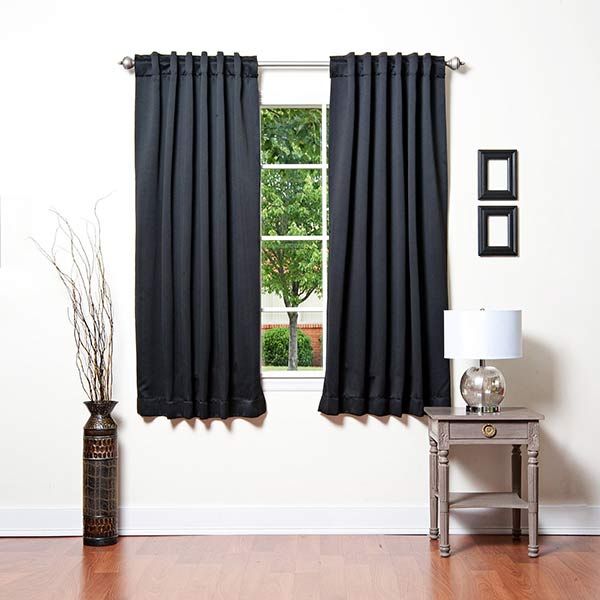
Pay attention to how dark your bedroom is at bedtime. Keeping it dark—especially if your schedule requires sleeping during the daytime—is a must. You may be able to ignore sunlight streaming in while you’re awake, but your body can’t while you’re sleeping. “Create an environment so your body can adapt to it,” says Rothstein. “Your body can’t control what you put around it.” That goes for nighttime lighting distractions as well, like streetlights or ambient light.
Metal blinds may not be cutting it in keeping out light or heat. Blackout curtains are Rothstein’s preferred option and come in a variety of styles and colors. Try Best Home Fashion Thermal Insulated Blackout Curtain (about $22 for a 52″W x 63″L panel, Amazon).
Liquids and Caffeine

Waking up during the night may be indicative of a sleep disorder, but there are a number of other factors that could be causing disruptions. Aside from an imperfect temperature, fluids may be to blame. “Don’t flood your body with liquids,” says Rothstein. Drinking a glass of water before bedtime means your body has to process it and may be to blame for those late-night trips to the bathroom.
Alcohol can also be to blame. “It may help you fall asleep, but it will interrupt your sleep cycles,” says Rothstein. Aside from the nightcap, caffeine and chocolate are also suspect. Indicate on your bedside notepad whether you opted for a slice of chocolate cake and a cappuccino after dinner. If you find yourself restless, having chocolate or caffeine late in the day may be a habit you need to break.
